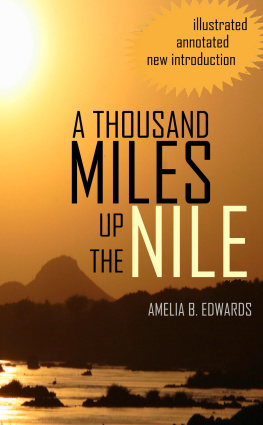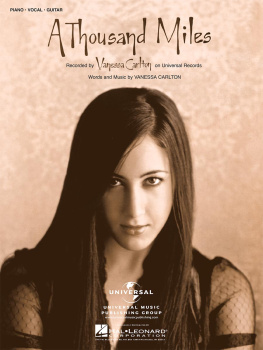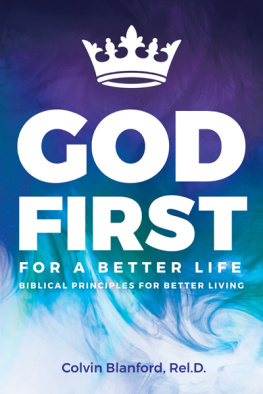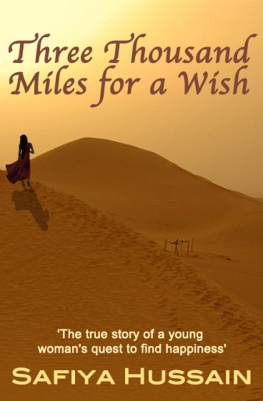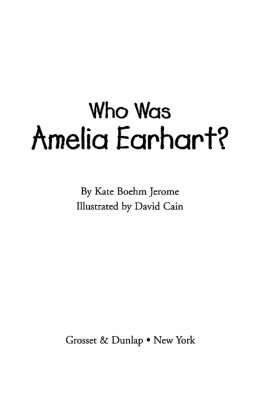Amelia Blanford Edwards - A Thousand Miles Up the Nile
Here you can read online Amelia Blanford Edwards - A Thousand Miles Up the Nile full text of the book (entire story) in english for free. Download pdf and epub, get meaning, cover and reviews about this ebook. year: 2013, publisher: Read Books Ltd, genre: Non-fiction. Description of the work, (preface) as well as reviews are available. Best literature library LitArk.com created for fans of good reading and offers a wide selection of genres:
Romance novel
Science fiction
Adventure
Detective
Science
History
Home and family
Prose
Art
Politics
Computer
Non-fiction
Religion
Business
Children
Humor
Choose a favorite category and find really read worthwhile books. Enjoy immersion in the world of imagination, feel the emotions of the characters or learn something new for yourself, make an fascinating discovery.
- Book:A Thousand Miles Up the Nile
- Author:
- Publisher:Read Books Ltd
- Genre:
- Year:2013
- Rating:5 / 5
- Favourites:Add to favourites
- Your mark:
- 100
- 1
- 2
- 3
- 4
- 5
A Thousand Miles Up the Nile: summary, description and annotation
We offer to read an annotation, description, summary or preface (depends on what the author of the book "A Thousand Miles Up the Nile" wrote himself). If you haven't found the necessary information about the book — write in the comments, we will try to find it.
A Thousand Miles Up the Nile — read online for free the complete book (whole text) full work
Below is the text of the book, divided by pages. System saving the place of the last page read, allows you to conveniently read the book "A Thousand Miles Up the Nile" online for free, without having to search again every time where you left off. Put a bookmark, and you can go to the page where you finished reading at any time.
Font size:
Interval:
Bookmark:

A THOUSAND MILES
UP THE NILE
BY AMELIA B. EDWARDS
1877
Introduction & footnotes Copyright 2016 by
BIG BYTE BOOKS (Click Shock LLC)
Cover photo: David Haberlah, Permission is granted to copy, distribute and/or modify this photo under the terms of the GNU Free Documentation License.
Even the casual student of Egyptology is no stranger to Amelia Edwards. Her role as the central driving force in the founding of the Egypt Exploration Fund (todays Egypt Exploration Society) places her in the ranks of the giants of the discipline. For those who pick up this book as new acquaintances of Amelia Edwards, a short introduction will enrich your experience of A Thousand Miles Up the Nile .
Born in 1831 and mostly educated by her energetic and doting mother, Edwards from an early age was possessed of passion and ambition. Through her adolescence and early adulthood, however, she struggled to discover a proper outlet for that energy. She spent seven years intensely training as a singer and musician, only to later feel those years were wasted, as she did not make a career of it. She studied art and later spent hours and hours sketching on her trip up the Nile, using some of those sketches to illustrate this book.
Edwards never married, though nearly did once. She lived for three decades with an older female friend, Mrs. Braysher. Edwards companion in Italy and Egypt was Lucy Renshawe, the woman referred to as L in the Egyptian tale youre about to read. Edwards never gives a hint of the nature of her relationships and her biographer, Joan Rees, finds nothing in letters or the writing by friends to illuminate those relationships. We know only that she was very close to her mother and that close female relationships seemed important to her throughout her life.
She tried her hand more successfully at journalism in her twenties and then secured her independence as a popular writer of novels. By the time she went to Egypt in 1873, she had published several successful novels and a well-received travel book on a trip through the Dolomites.
In her later writing style, we see the earlier influences brought to bear on prose that is a delight to read and a book that is exhaustive in its treatment of its subject. Her understanding of music, poetry, and art all combine in A Thousand Miles . The book is a symphony of love for time and place. It begins quietly, swells to heights, then is relieved by minute details and humor. She educates the reader and then loses herself in rapturous descriptions of life on the Nile:
we used to wonder if in all the world there was another climate in which the effect of moonlight was so magical. To say that every object far or near was visible as distinctly as by day, yet more tenderly, is to say nothing. It was not only form that was defined; it was not only light and shadow that were vividit was colour that was present. Colour neither deadened nor changed; but softened, glowing, spiritualized.
An example of her curiosity about all things and the detail she brought to small things is shown in this passage about Nubian women wailing at a funeral:
As for the wailbeginning high and descending through a scale divided not by semi-tones but thirds of tones to a final note about an octave and a half lower than that from which it started
The book is extremely well crafted, with the authors choices of timing and rhythm woven tightly together and transparent to the reader. In writing, Edwards had found the perfect tool to focus her talents and energies. She patterns her descriptions with painterly and scholarly detail, and makes you care about those things she cares about.
Of the Egyptians that she encounters, she sometimes indulges in generalizations, and then reminds us that she is generalizing, and that this is a presumption on her part. Apart from Lady Lucie Duff Gordon, Edwards is nearly alone in expressing an understanding of the poorest of Egyptians, and that
the people are not merely appropriate figures placed there for the delight of sketchers, but are made of living flesh and blood, and moved by hopes, and fears, and sorrows, like our own.
She is pained by the suffering she sees, especially of children, as she feels there is nothing to be done to relieve it. Animals of burden are targets of her sympathetic sensitivity. Even of the crocodiles, which she at first hopes to see bagged on the mast of her boat, she later deplores the slaughter of. She predicts correctly that they would be wiped out.
The great passion in Amelia Edwards life became Egyptologythe study of the history, culture, language, and monuments of ancient Egypt. She went to Egypt, she tells us, merely to get out of the weather in Europe. She went armed with previous knowledge shed garnered from Wilkinson, Murray, Mariette and others whom she had read, including Herodotus and Strabo. But she was unprepared for the impression that Egypt had on her romantic sensibilities.
Even a modern visitor to Egypt, as I have been on many occasions, is swept along with Edwards on this voyage. As she describes places and experiences familiar to any traveler up the Nile, she adds a multitude of keen observations that make one feel theyre seeing it all again for the first time. Nothing is uninteresting; no time seems lost in tedium.
It is astonishing to think of how much she saw and recorded in one trip. She brought the sensibilities of the poet, historian, humorist, and scholar to the task, all with success.
Edwards seems never to have taken to anything except to go all in. She had an astonishing grasp of classical history, fostered by an intense interest. While in Egypt, she observed the ongoing destruction of the ancient monuments, carved up for collectors and museums, burned in lime kilns, and given away for political favor. By the time she left, saving Egypts heritage had become the abiding mission of the rest of her life.
A Thousand Miles Up the Nile was published to acclaim in 1877, with a second edition in 1888. The EEF was formed and Amelia Edwards threw herself into fundraising and publicity for the organization. In 1889-1890, she made a very successful lecture tour of America. The work consumed her. It cannot be overestimated the importance of her efforts for Egyptology. In the 20th century, she was the model for the fictional character in the Amelia Peabody series.
She saw great promise in the work of a young man named William Flinders Petrie and used the EEF to support his digs. Petrie is known today as the father of modern archaeology; Edwards support for him alone is enough to ensure her legacy. But she did so much more, to the neglect of her finances and to the eventual detriment of her health.
Amelia Edwards died on April 15, 1892 of complications of influenza. Her health had been weakened by travel and by surgery to treat breast cancer. She was buried in Henbury churchyard with an obelisk for a headstone and an Egyptian ankh over her grave.
Aside from Lucy Renshawe (L), Edwards companions on the Nile included the Painter. This was Andrew McCallum, whom Edwards had known previously and who had been up the Nile several times before. Friends of his joined them and are referred to as the Happy Couple. Amelia and Lucy also made friends with two other Englishwomen whom they met on the boat from Brindisi to Alexandria. This was Miss Booth and Miss Marianne Brocklehurst, who sailed in the Bagstones and are referred to in this book as the M.B.s
For someone, like me, who cared dearly about reproducing the original book with fidelity, Edwards madness for footnotes was heartbreaking. Though Ive kept Amelias spelling and 19th century prose intact, I removed her voluminous footnotes (nearly 400). Even in the original print edition, footnotes that sometimes run to over 1,000 words are a great disruption to the narrative flow.
Next pageFont size:
Interval:
Bookmark:
Similar books «A Thousand Miles Up the Nile»
Look at similar books to A Thousand Miles Up the Nile. We have selected literature similar in name and meaning in the hope of providing readers with more options to find new, interesting, not yet read works.
Discussion, reviews of the book A Thousand Miles Up the Nile and just readers' own opinions. Leave your comments, write what you think about the work, its meaning or the main characters. Specify what exactly you liked and what you didn't like, and why you think so.

